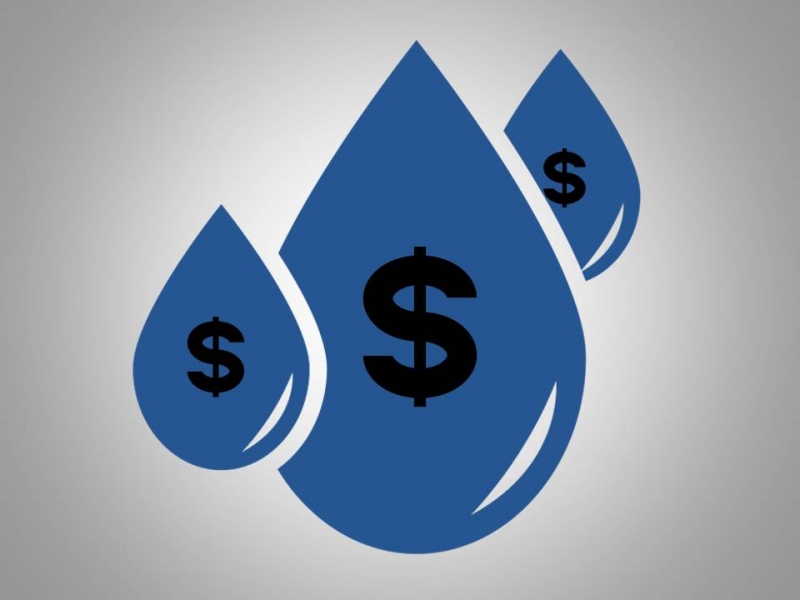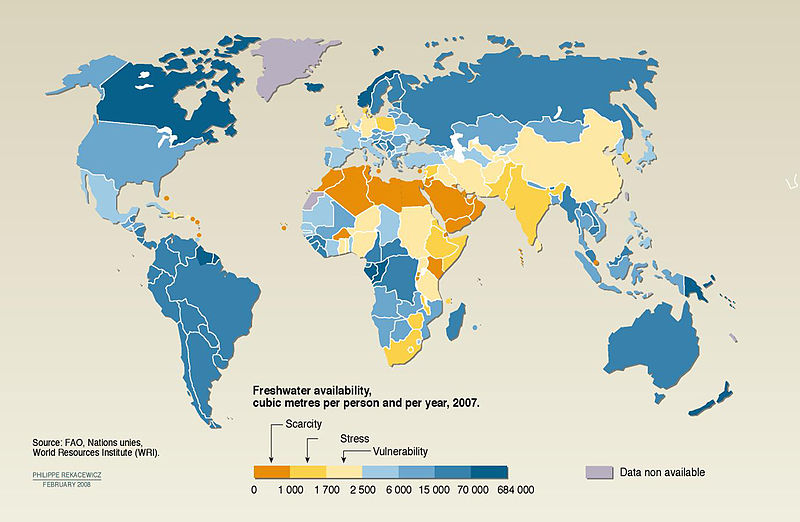Prior to the 2016 ELI Award Dinner, ELI convened an expert panel of business leaders, legal minds, and nongovernmental advocates to discuss “The Business of Water.” This conversation was particularly timely, because as climate change alters global weather patterns and the Earth’s population continues to grow and urbanize, water resources are poised to become an ever-increasing point of contention, even in regions where water scarcity has not historically been an issue. Water law and policy is complex, varying regionally, country by country, and even within national borders. As more stakeholders compete for water resources, businesses around the world are changing the way they value water within their business models, and policymakers are looking at new levers to ensure responsible use of this increasingly precious resource.
So, what considerations should businesses make when managing water consumption in a changing climate? To discuss this and other key resource questions, ELI invited a panel of industry experts to share their insights.
Access to water remains a critical issue to many communities.
In the developing world, where many communities lack access to water infrastructure, companies can play a significant role in providing communities with additional resources. Michael Mahoney (Pfizer) said that water management intersects with his company’s sustainability program as well as its mission as a healthcare company: “There are so many diseases that are the result of a lack of access to clean water, so it really intersects with the company’s mission to work together with others for a healthier world.” Betsy Otto (World Resources Institute (WRI)) said that the lack of access to clean water can cause a huge issue for businesses, especially when it impacts the health of mothers and their children and prevents them from working.
 Images by Gilad Fried and Creative Stall
Images by Gilad Fried and Creative Stall
The valuation of water needs to change.
Currently, the price of water does not always reflect the true cost of pumping it, moving it, and treating it. Betsy Otto (WRI) noted that companies tend to hugely underprice and undervalue water, while the cost of providing water is increasing. “The challenge for us . . . is really creating a mindset where water is a resource instead of a utility bill,” said Stewart Leeth (Smithfield Foods).
Water quantity standards are as important as water quality standards.
Growing water scarcity isn’t the only challenge. As Dawn Rittenhouse (DuPont) mentioned, companies also need to be prepared for flood resistance, since we will start to see the impact of too much water on agriculture as a result of climate change. While the United States has very good processes for setting and enforcing water quality standards under the Clean Water Act, we do not have the same standards for water quantity. While other countries have a Ministry of Water, the responsibility to manage water quantity in United States is divided among over 20 separate government agencies.
A number of innovative tools are now available to assist with water resource management.
Facilities in water-stressed areas are often required by company management to develop comprehensive resource management plans. However, companies and public agencies can lack an understanding of the sustainable yield for either surface water or groundwater. Betsy Otto (WRI) said that it was like “withdrawing money out of your banking account where you have no idea what the balance is.” In response to this, WRI has worked with companies like DuPont, Coca-Cola, and Pfizer to develop water use reduction targets, to assist with replenishment efforts, and to map out facility water usage using their Aqueduct tool. Aqueduct was designed to provide companies, governments, and other users with a tool to map water risks. According to Betsy Otto, Aqueduct 1.0 was based on data provided by the Coca-Cola Company.
Aqueduct is not the only tool businesses are using to help them plan for smart water management. Smithfield Foods, for example, used a World Business Council for Sustainable Development tool in combination with a company tool to assess watershed risk around all of its facilities, and this survey is scheduled to take place again in 2018.

Data is an important way to create a meaningful picture of water use.
While companies usually have good internal data, they can lack helpful local context information. Michael Mahoney (Pfizer) said that it was important to collect data where there is current resource stress and in areas that are anticipated to experience resource stress. “It forces us . . . in [water-] stressed areas to do very detailed water assessments and look for opportunities for reductions,” he said. Staff members are incentivized to seek out opportunities to reduce water usage. Satellite information analyzing groundwater resources is another promising area of advancement, for example, through the use of the Gravity Recovery and Climate Experiment (GRACE) satellite, which takes sensitive measurements of groundwater levels.
Market-based approaches can present new opportunities for water resource management.
Vail Thorne (Coca-Cola) noted that companies are seeing the impact of poor water management throughout their businesses: in their direct operations, in their supply chains, and even in how consumers are using water as it relates to the products they purchase. As a result, investors in companies are paying close attention to water-related risks and asking companies to consider where they might encounter future challenges. Additionally, he mentioned that businesses have an opportunity to take action in ways that governments often cannot, due to political gridlock. In line with the U.N. Global Compact, Coca-Cola has an internal policy not to site a plant anywhere that would negatively impact water resource quality and quantity. The Coca-Cola Company conducts “source vulnerability assessments” in order to develop a “source protection plan.” This program, Replenish, aims to balance out the company’s use of water in the product.
While advancements are still needed in the area of water management, it has become a priority for many businesses. As we face a changing landscape due to the effects of climate change, we need to consider how we value this natural resource. Through advancements in both technology and a greater understanding of our natural resources, members of the public and private can aim to balance our economic and environmental needs.
